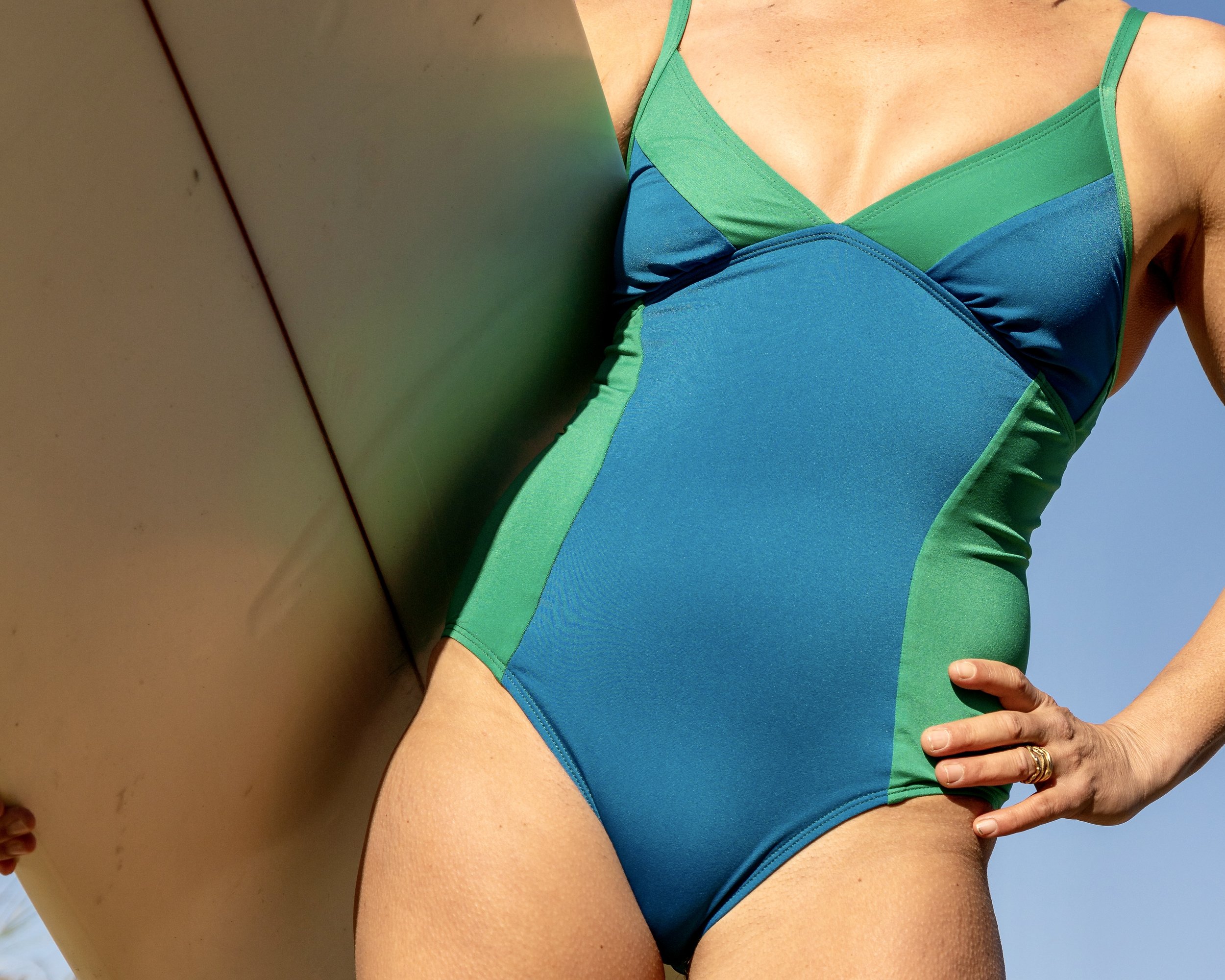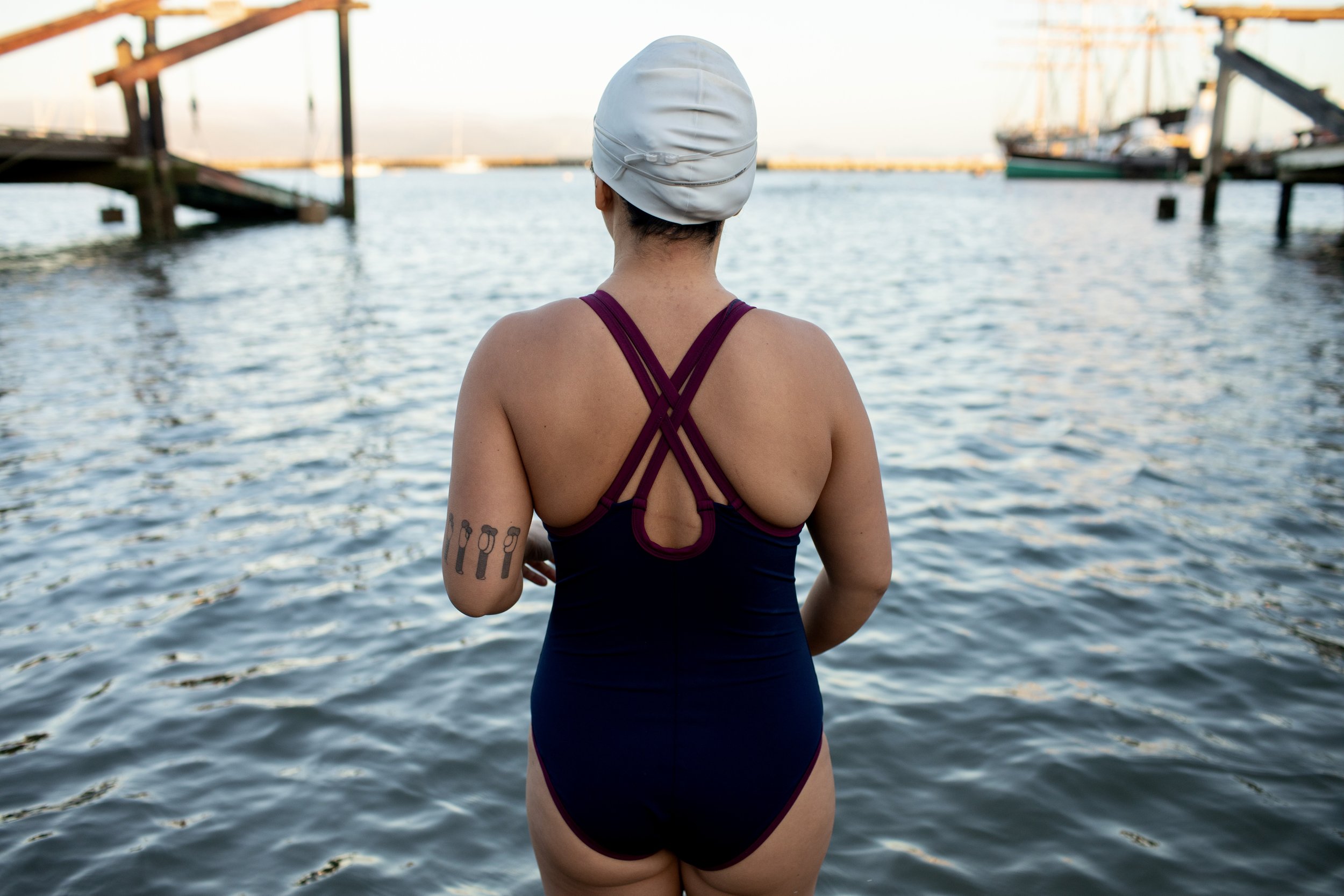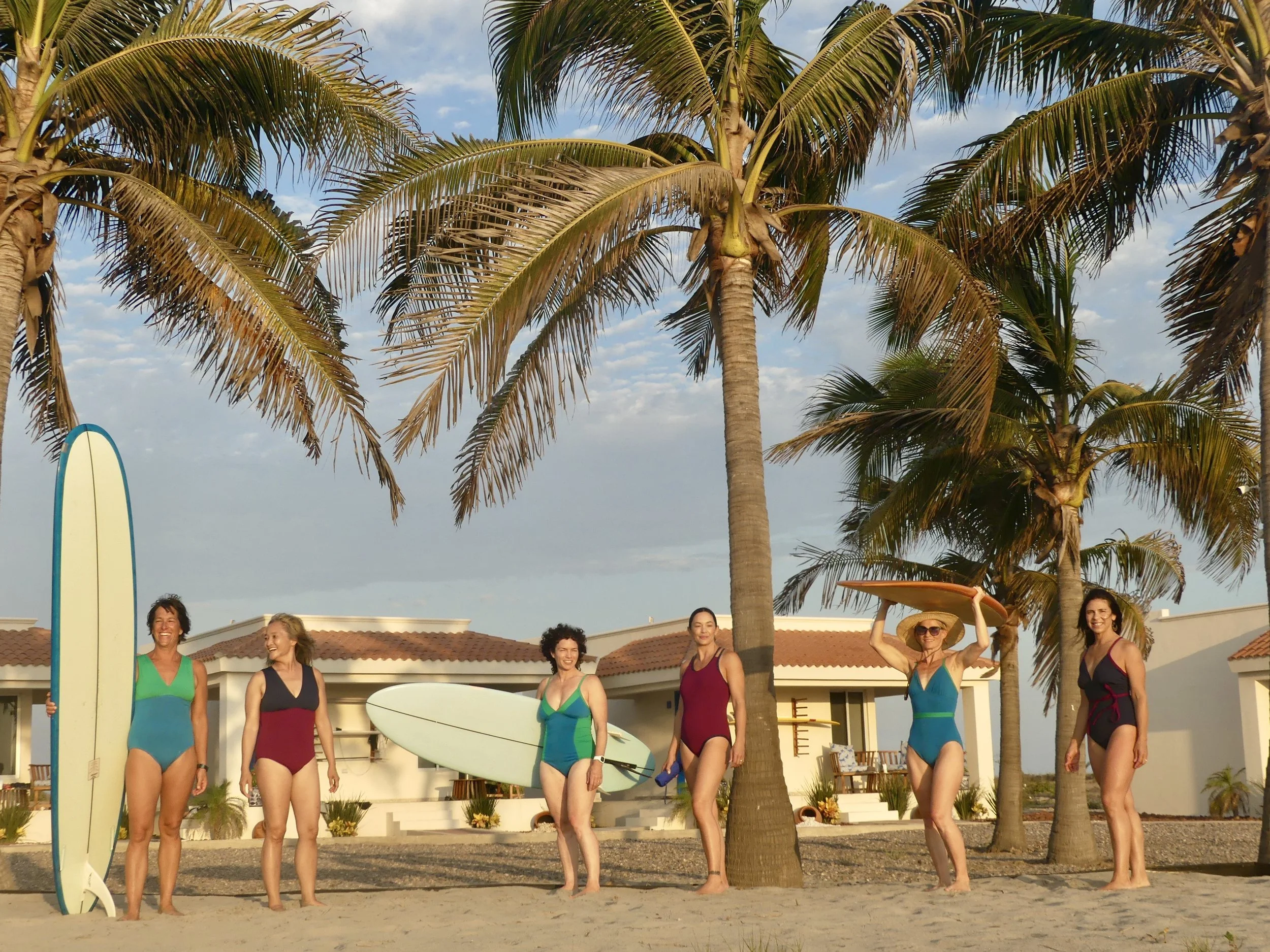Function Meets Fashion: What to Look For in a Performance Swimsuit
I’ve spent most of my life in swimsuits. As a longtime surfer and world-ranked professional open water swimmer who has swum around Manhattan, in the Red Sea, and the Catalina Channel, I’ve gone through thousands of suits. Along the way, I’ve found that many other active women share my frustration in a lack of options when it comes to suits that are long-lasting and designed to perform without compromising on flattering, feminine style.
Tired of choosing between function and fashion, I decided to start my own swimwear line that celebrates the athleticism and beauty of female waterwomen. I’ve learned a few things along the way. Here’s how to find a suit that holds up in heavy water.
How to Find the Best Swimsuit for Surfing and Training
There is perhaps no better cross-training for surfing than hitting the lap pool or tackling open water swims. Swimming increases your endurance, builds paddle strength, boosts your mood, and helps you learn to regulate your breath—all essentials for the well-rounded waterwoman.
Whether you’re swimming, surfing sans wetsuit, or both, you need a swimsuit that can stand the performance test. This means sturdy materials that move with your body and support you in all the right places without sacrificing style.
When you’re crossing your thousandth meter in 50-degree water or duck diving the biggest set of the day, the last thing you want is to worry about what you’re wearing. Knowing what to look for in a suit will take the guesswork out and keep you comfortable in those critical moments.
Types of Performance Swimsuits
There are a lot of terms for swimsuits. “Exercise,” “Athletic,” and “Active” all mean the same thing: designed for athletic performance in the pool or waves.
Within this category of sporty suits, there are plenty of style options: open or covered back, choices of shoulder strap thickness, and low, standard, or high necklines. There are also different options when it comes to function.
Competition suits have a very snug fit and are not meant for everyday wear. Training suits (or practice suits) are more suitable for the typical recreational swimmer who wants to take their training up a notch. They are functional, durable, retain their shape, support the body’s range of motion, and add some compression. They perform by efficiently meeting the athlete’s stretching and pulling at any speed and with any paddle stroke while also prioritizing a comfortable fit.
Material and Construction
The three most important swimsuit features to consider for surfing or open water swimming are fabric/material, stitching, and construction.
Fabric
When considering which material is right for you, generally a judgment call is required: is your priority durability or style?
Less stretchable fabrics, like polyester, last longer, while fashionable styles made with material like lycra and spandex can become saggy and see-through over the course of a single season. Nylon, on the other hand, is soft but not super stretchy or body-hugging. Nylon is often combined with lycra to produce a form fitting suit with a longer life than just lycra, but not as long as polyester.
Recycled nylon and polyester options are increasingly common for the eco-conscious. Durability is also an important factor in sustainability.
Seams
Double-stitching makes a suit stronger by holding taut the elastic and thus the edge of the suit, ensuring a tighter fit to the body. This prevents the suit from billowing with water or sliding down. But keep in mind: your neck and shoulder area shouldn’t hurt from too-tight straps.
Style
Leg line: If you’re looking for more coverage, a jammer-style leg line has the added benefit of compressing the body to help reduce drag and minimizing muscle fatigue by supporting blood flow. But some women find that higher-cut suits are more comfortable to wear while surfing. High, standard or lower-cut leg line options all allow a full range of leg movement. It’s all about your personal preference.
Straps: The thicker the strap, the more chest and suit support. The classic back design is the criss-cross strap which allows the swimmer to have full range of motion. However, if you are wanting something fun or sophisticated, there are other options that provide less but still sufficient support. For example, a horizontal strap across the back or a strap tie behind the neck can also keep the suit in place.
There are many suit options that provide excellent performance for all your ocean-based activities. It’s important to understand what features are most important to you and what tradeoffs you are making. No matter what, you should always feel comfortable and confident in your swimwear.
This post is contributed by See Her Swim, a female-owned swimwear brand based in San Francisco. Take 15% off their premium-quality swimwear with code SEAMAVEN to support their mission.





